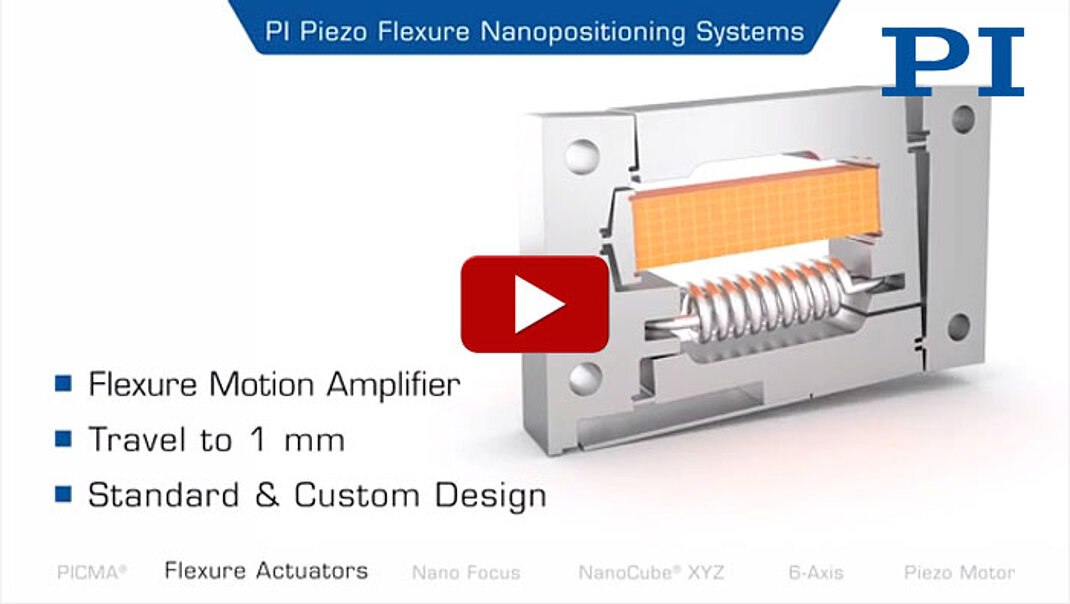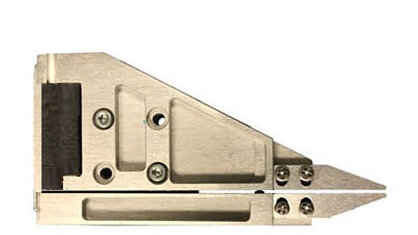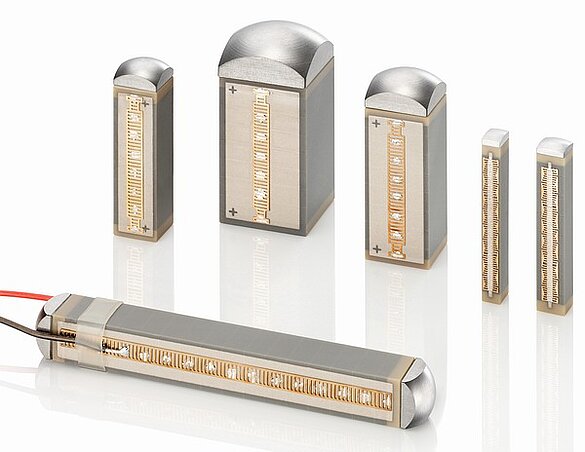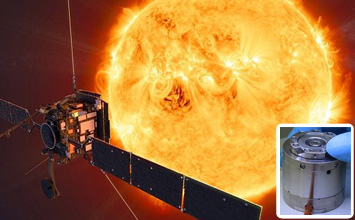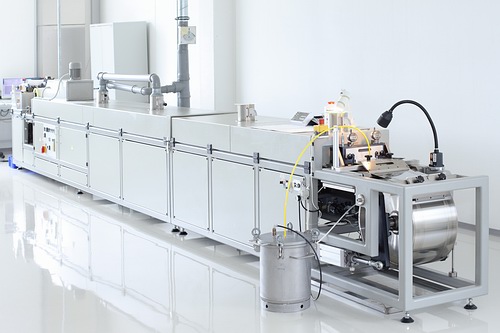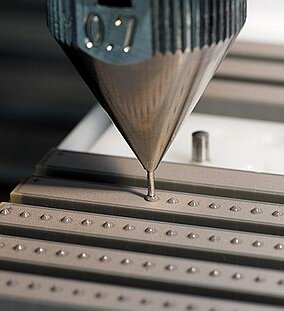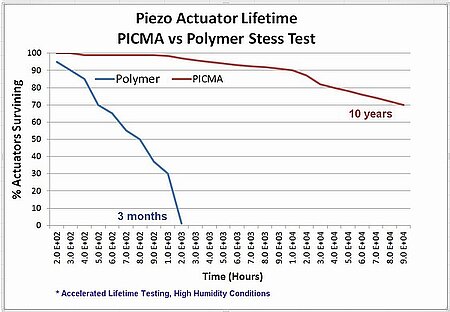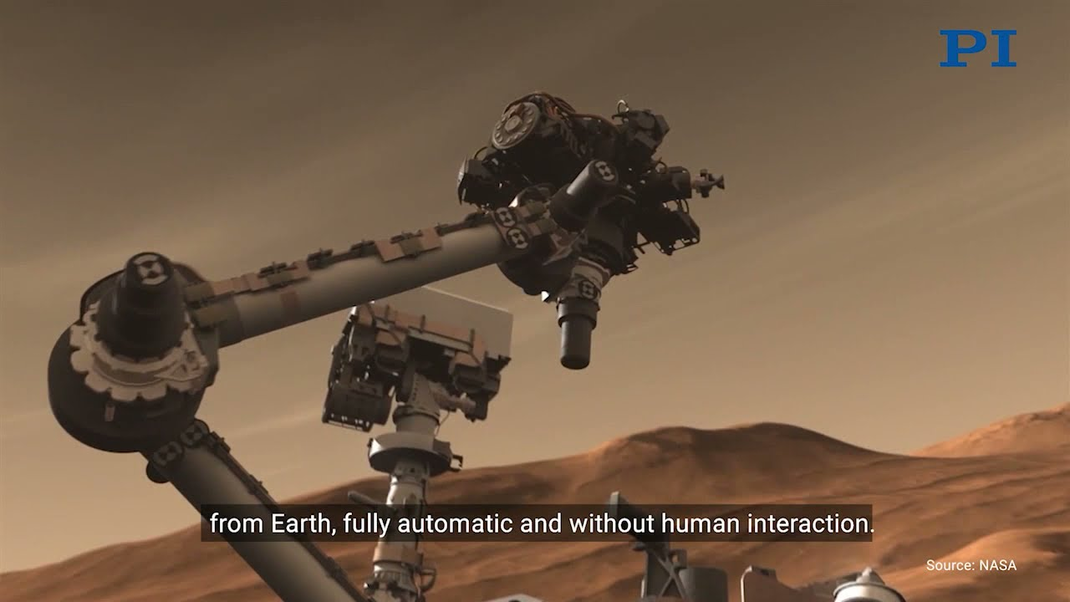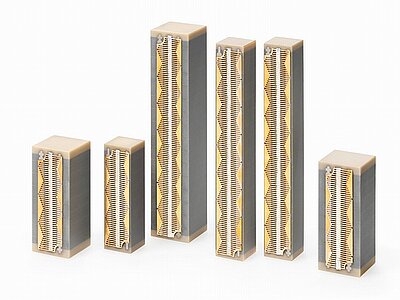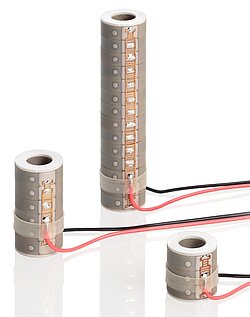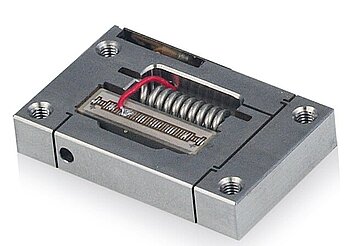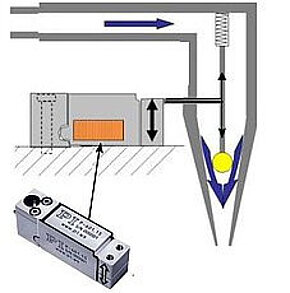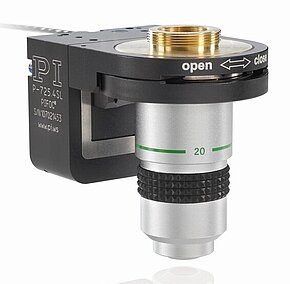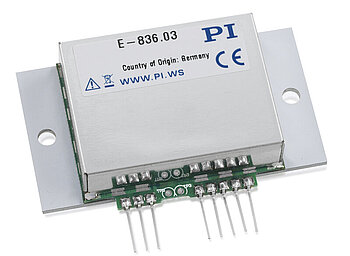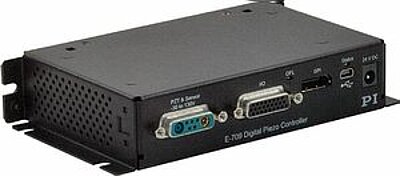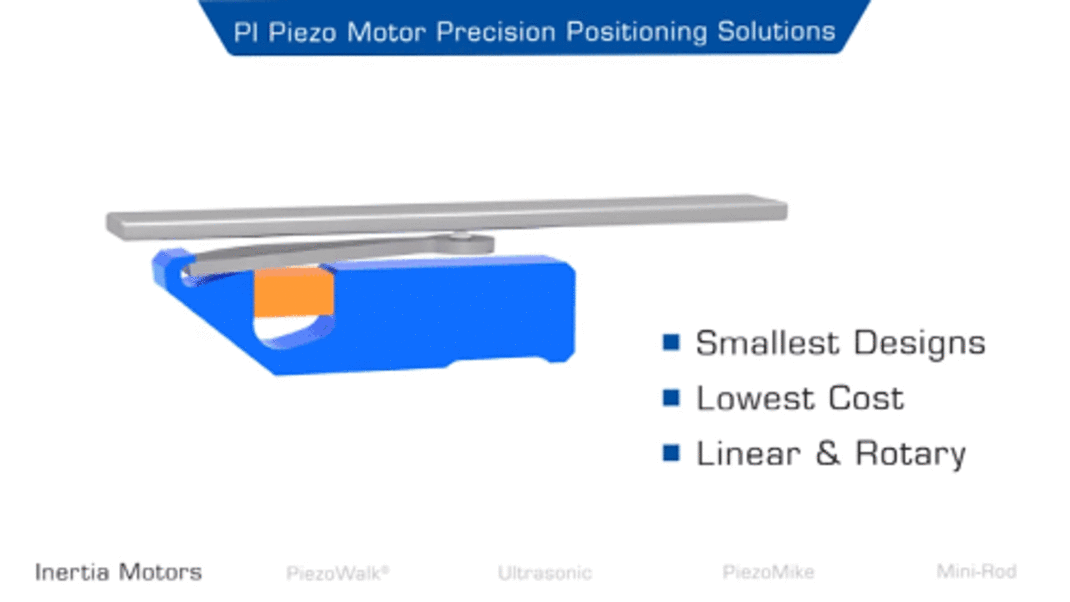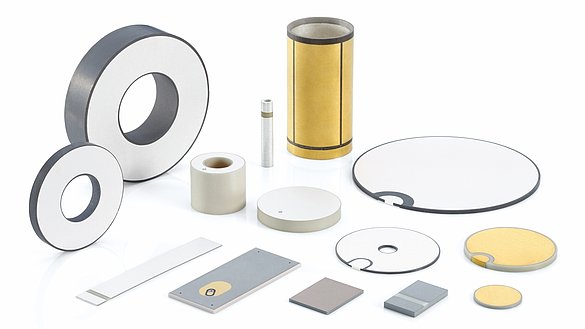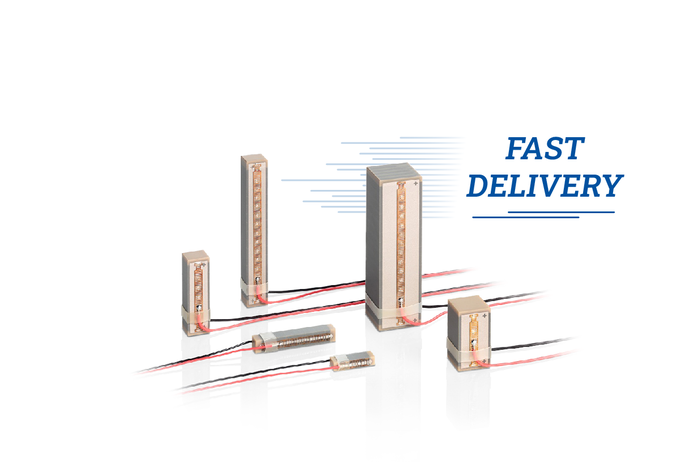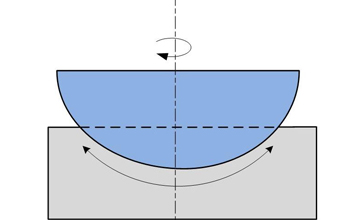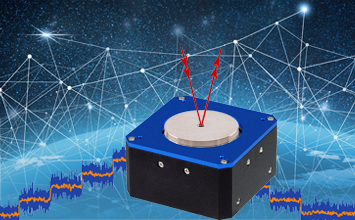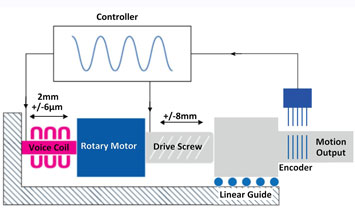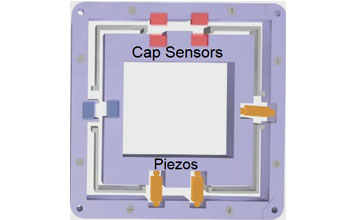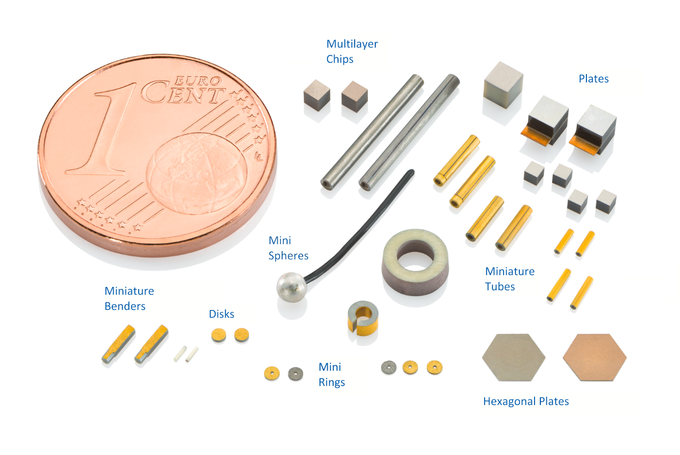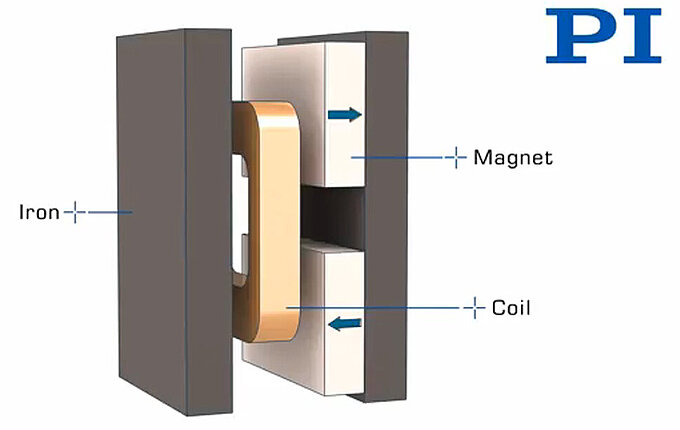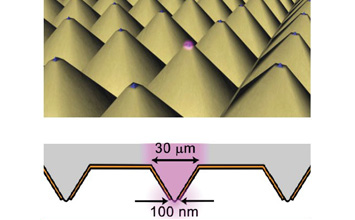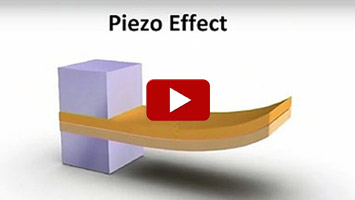Reliable Piezo Motion Devices for Industrial and Space Applications
Multilayer Ceramic Actuator Technology Tested to 100 Billion Life Cycles
Piezo ceramics convert electrical energy directly into mechanical motion and vice versa, based on crystalline solid state effects. Piezo actuators are quite unique in combining force, speed and precise motion into a small package. To make them more accessible for OEM designers, manufacturers can package the actuators inside an arrangement of flexures providing precision guidance, amplified motion along with a simple mounting interface. Flexures are usually made of aluminum, steel or titanium. With the absence of friction and wear, they can provide 10’s of to 100’s of billions of cycles of maintenance-free service. Piezo motion devices allow position changes to be made in milliseconds or even microseconds and with precision down to sub-nanometers without difficulty. Piezo actuators (not to be confused with piezo motors) provide motion output proportional to a drive voltage – usually up to one millimeter and high dynamics with frequencies in the hundreds to thousands of Hz. There is no mechanical wear and no frictional parts to limit resolution: perfect conditions for many precision motion and positioning applications in industry, life sciences, microscopy, medical engineering and in space.
100 Billion Cycles – Can an Actuator be Designed to Provide this Kind of Reliability?
The short answer is yes. However, before the advent of monolithic, cofired and ceramic encapsulated piezo actuators, the reliability of piezo ceramics was strongly dependent on the environmental conditions at the site of application. For actuators with conformal coatings, humidity, temperature and operating voltage are of considerable influence, since no polymer insulation exists that is absolutely impermeable. For these devices the life expectancy can decrease dramatically at high humidity. Ingressing moisture and the electric field applied can then cause chemical reactions in the component, which are accelerated by higher temperature. The result is initially an increased leakage current and finally a dielectric breakdown, that is a short circuit between the electrodes. During dynamic operation, the service life of the piezo ceramics can be affected by dynamic forces and alternating mechanical stress conditions. Poorly designed ceramic actuators can be affected by micro cracks leading to failure quickly in such cases.
How to Do it Right
The answer lies in optimized materials and manufacturing processes, appropriate design and, last but not least, the choice of suitable insulation. The PICMA® cofired piezo stacks (Figure 1) supplied by PI Ceramic are a good example. Based on a stack of layers of specialized ceramic, only a few dozen microns thick, interleaved with electrodes and sintered into a solid structure.
During manufacturing, first, the ceramic material, which is based on a special modified PZT (a ferroelectric ceramic), is ground to make a slurry from which thin ceramic foils are cast (Figure 2). This material is useful for motion positioning applications because PZT ceramic exhibits a small but almost linear dimensional change as a drive voltage is applied across the electrodes. Next, electrodes are screen printed and the layers are laminated to stacks. The ceramic is compacted to remove the air trapped between the individual layers and sintered together with the electrodes (cofiring technology) to create a monolithic block. This is protected against humidity and failures by a ceramic insulation layer. The monolithic design also increases the material stiffness leading to a higher mechanical resonant frequency, prerequisites to fast mechanical response to electric input and highly dynamic applications. The ceramic is not flexible, the motion is fully based on solid state effects.
The exclusive use of inorganic materials, for insulation, and the electrical contacts (Figure 3), also facilitates use in in ultra-high vacuum, as there is no outgassing.
Figure 4 shows accelerated lifetime testing results under high humidity conditions comparing piezo ceramic actuators with conventional conformal coatings and ceramic-insulated PICMA® actuators. Resistance to humidity is especially important for positioning applications in the semiconductor industry. High and constant offset-drive voltages are usually employed here, for example, to keep wafers in a stable position during lithography and inspection.
During this process, the clean rooms are artificially humidified to prevent electrostatic flashovers.
Another high humidity example is from the precision machining world (piezo actuators are used there in fast tool servos, active vibration cancellation and precision alignment applications): Here, cooling liquids can cause a significant increase of the ambient humidity.
Independent Testing for Space Applications
This also applies to applications under space conditions at ultra-low temperatures and high vacuum. When NASA was working on the Mars Mission, multiple types of actuators were considered and tested. For the sample analyzer system of the CheMin laboratory unit of the Curiosity Mars rover (Figure 5) example, PICMA® piezo actuators were selected after 100 billion cycles without failures or loss in performance.
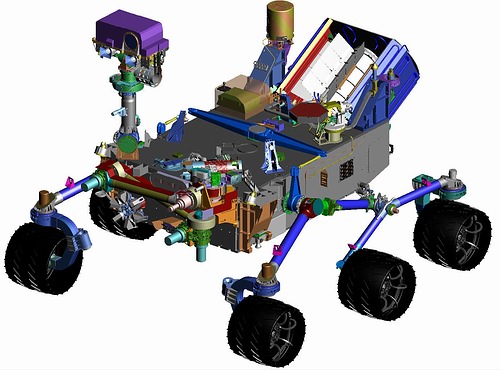
The CheMin instrument performs chemical and mineralogical analyses on Mars rocks. For supply with suitable rock samples, the rock powder first has to be sorted. To this end, the powder is shaken at various amplitudes and frequencies in the range from 0.9 to 2.2 kHz to achieve homogeneous particle sizes or separation according to density. This task is performed by the PICMA® multilayer piezo actuators. They carry out the oscillations required in material selection and supply at a defined amplitude and frequency.
In advance, the piezo actuators had to pass extensive qualification and testing prior to being allowed on board. Failure is not an option on a 2.5 billion dollar project. Here, the PICMA® actuators were able achieve impressive results: The extensive NASA/JPL performance and service life tests showed zero failures after 100 billion (10 exp 11) cycles.
More independent tests were conducted by the European Community Research Infrastructure to investigate the behavior of piezoelectric actuators in conditions equivalent to 10 years of operation in an active frequency tuner for ILC superconducting cavities (SC).
Minimizing Negative Influences: Stress Loading and Humidity
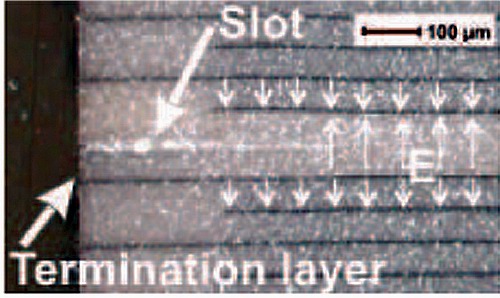
To maximize lifetime and minimize stress in such dynamic applications it is essential to reduce to probability of cracks. This is where the patented slot design of the PICMA® actuators comes into play, as it minimizes the tensile load. The lateral slots prevent an increase in mechanical tensile stress in the stack and thus counteract the formation of uncontrolled cracks (Figure 6).
Another feature to consider is the stress on the electrodes. Repeating the same motion 100 billion times can wear you out. To avoid fractures of the termination electrodes, a patented meander-shaped design (Figure 7) ensures all internal electrodes have a stable electrical contact even at extreme dynamic loads. This is why the PICMA® design will survive where other designs fail. Download paper on PICMA® piezo design and reliability: Reliability & Lifetime of Multilayer Piezo Actuators
Low Operating Voltage
PICMA® actuators are designed to run at minimized operating voltages. In contrast to most conventional actuators they achieve their nominal motion output at operating voltages significantly below 150 V, in the case of bender-type actuators as low as +/-30V. This property is achieved with particularly thin ceramic layers.
Using modern production technologies, the multilayer actuators can be manufactured in virtually any shape. In doing so, all surfaces are encapsulated with the ceramic insulation (Figure 8).
Various basic shapes with round or triangular cross-sections are available, including insulated center holes on benders, chips and stack actuators.
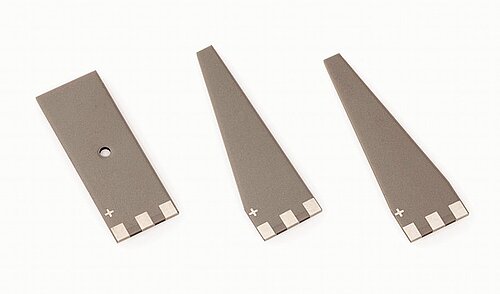
Flexure Designs for Long Travel and Easy Integration
The operation of the piezo ceramic actuator is characterized by four factors: a) precision; b) speed; c) high force and d) relatively short displacement. Since the positioning precision is derived from molecular effects, if is free of stiction and friction which allows controllability down into the sub-nanometer range if desired. On the other hand, high force motion can be exerted in micro-seconds. This is why piezoelectric mechanisms are at the heart of the latest generation fuel injection valves as well as in today’s semiconductor lithography tools, super-resolution microscopes and a variety of other nanoscale-precision metrology and positioning systems.
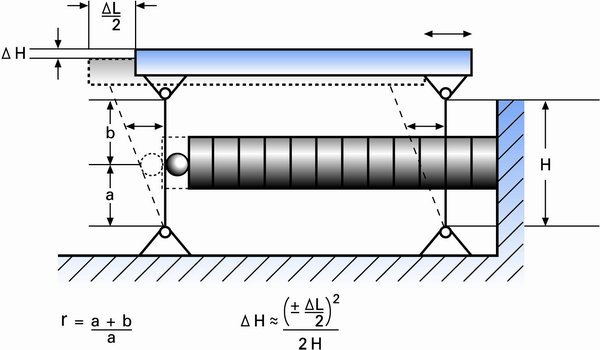
The motion output of a piezo stack is limited to about 0.1% of its physical length. When longer motion ranges are required along with ease of installation and integration, a flexure actuator with integrated motion amplifier is the right choice. At the heart of these flexure actuators is a piezo stack (Figure 9).
Depending on the design, the motion range can be amplified up to 20X, while at the same time protection from lateral and tensile forces is provided and precision guidance is added. Increasing the motion range however, reduces the stiffness, and a proper balance between maximum displacement and stiffness / force has to be found for the intended application.
Central to the utility of piezoelectric flexure actuators is their range of configurations and their well-thought-out mounting provisions. These are easy mechanisms to integrate into a design (Figures 10, 11). Everything has been considered: their integrated preload mechanisms accommodate even high-dynamic actuation; their optional position feedback sensors are mounted in the right location to provide reproducible, hysteresis-free information; their flexure guidance accommodates common applications without difficulty.
Ease of Control
Today, motion system designers can chose among a wide range of piezo motion controllers, spanning the spectrum of capability and cost.
Features that can be found even in compact, cost-efficient and OEM-friendly units include modern high-speed digital and analog communications interfaces, internal waveform-generation capability, advanced all-digital servo-algorithms with auto-calibration, data-recorders for evaluation of transients and system optimization. (Figures 12, 13)
What’s Next
Piezoelectric devices are increasingly being utilized by product designers and incorporated successfully into a widening range of applications where precision motion control is needed. While piezo stack actuators and the latest generation of flexure actuators deliver a broad product development capability for OEM designers, piezo ceramics provide the basis to many more motion control solutions. Piezo motors, for example, a separate class of piezo motion devices for long travel applications, provide fast and precise motion significantly beyond one millimeter. Piezo motors are divided in to several sub-categories such as resonant motors, inertial motors, inchworm-type motors etc. There are linear and rotary motor configurations each with specific performance characteristics. Stay tuned to learn more or click here for some piezo motor product examples.
Blog Categories
- Aero-Space
- Air Bearing Stages, Components, Systems
- Astronomy
- Automation, Nano-Automation
- Beamline Instrumentation
- Bio-Medical
- Hexapods
- Imaging & Microscopy
- Laser Machining, Processing
- Linear Actuators
- Linear Motor, Positioning System
- Metrology
- Microscopy
- Motorized Precision Positioners
- Multi-Axis Motion
- Nanopositioning
- Photonics
- Piezo Actuators, Motors
- Piezo Mechanics
- Piezo Transducers / Sensors
- Precision Machining
- Semicon
- Software Tools
- UHV Positioning Stage
- Voice Coil Linear Actuator
- X-Ray Spectroscopy

